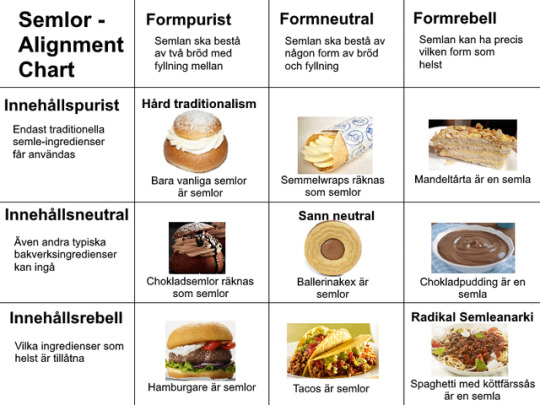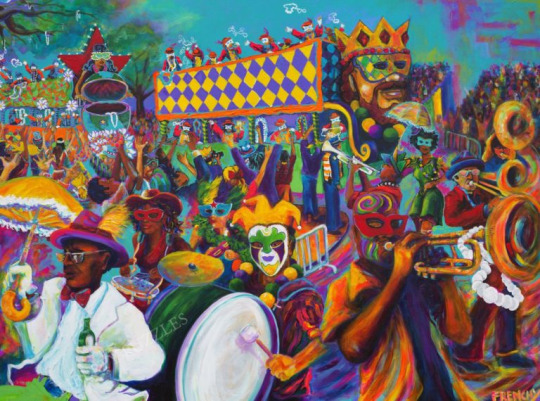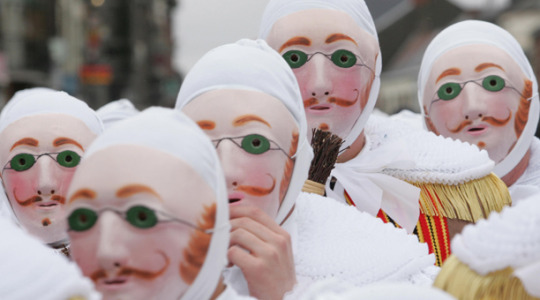#fastlagsbullar
Explore tagged Tumblr posts
Link
Idag är ingen vanlig dag, då det både är internationella pannkaksdagen och fettisdagen samtidigt 🤩 Vad äter du? Rösta nedan... Så redan till lunch firades det med pannkakor 😍 Det blev fluffiga amerikanska pannkakor från @oayeah.pancakes tillsammans med smör och lönnsirap 👌 Pannkaksdagen kommer från början ifrån England, där man istället för semlor äter just pannkakor. Av denna anledning har de infört Internationella pannkaksdagen på samma dag som fettisdagen infaller. Kär bakelse har många namn... Och denna speciella dag har lite olika namn ute i världen. Exempelvis Mardi Gras, Shrove Tuesday, Faschingsdienstag, Fastelavn och Fastlagstisdag. Nej, nu blev jag sugen på en semla också... #oayeah @oayeah.pancakes #pancake #oatdrink #smakbox @smakbox #smakboxtävling #internationellapannkaksdagen #pannkaksdagen #mardigras #shrovetuesday #faschingsdienstag #fastlagstisdag #fettisdagen #semlor #semla #fastlagsbullar #fastelavnsboller #fastelavn #pancakes #pancaketuesday #pancakeyay #pancakeday #pancakestack
#oayeah#pancake#oatdrink#smakbox#smakboxtävling#internationellapannkaksdagen#pannkaksdagen#mardigras#shrovetuesday#faschingsdienstag#fastlagstisdag#fettisdagen#semlor#semla#fastlagsbullar#fastelavnsboller#fastelavn#pancakes#pancaketuesday#pancakeyay#pancakeday#pancakestack
0 notes
Text
Baka dina egna semlor till fettisdagen!
I morgon är det fettisdagen, en kär tradition när vi frossar i fastlagsbullar eller semlor. Och fettisdagen firas i alla kristna länder, om än på olika sätt. I de anglosaxiska länderna kallas den här dagen för Shrove Tuesday och det frossas i pannkakor av olika slag.Till de mer kända fettisdagsfirandena hör förstås Mardi Gras i New Orleans och den stora karnevalen i Rio de Janeiro som brukar…

View On WordPress
0 notes
Text

@svenskjavel jag föreslår att du gör samma poll och vi ser om vi kan jämföra mellan länderna?
Eventuell research question: har svenskar och finländare olika åsikter om fastlagsbullar?
196 notes
·
View notes
Text

I really enjoy all the different words for the shrove bun or Lenten bun (in addition to eating it!). The sound changes and stem changes in the Nordic and Baltic countries are fun to follow.
Estonian - vastlakukkel
Latvian - vēja kūkas
Finnish - laskiaspulla
Swedish - semla / fastlagsbulle
Norwegian and Danish - fastelavnsbolle
4 notes
·
View notes
Photo

A semla, vastlakukkel, laskiaispulla or fastlagsbulle/fastelavnsbolle is a traditional sweet roll made in various forms in Sweden,[1] Finland, Estonia, Norway, Denmark, the Faroe Islands and Iceland, associated with Lent and especially Shrove Tuesday in most countries, Shrove Monday in Denmark, parts of southern Sweden, Iceland and Faroe Islands or Sunday of Fastelavn in Norway. In Sweden it is most commonly known as just semla (plural: semlor), but is also known as fettisdagsbulle (lit. "fat tuesday roll"). In the southern parts of Sweden, as well as in Swedish-speaking Finland, it is known as fastlagsbulle (plural: fastlagsbullar; semla on the other hand means a plain wheat bun with butter, called "fralla" in Sweden). In Estonia it is called vastlakukkel. In Norway and Denmark it is called fastelavnsbolle. In Iceland, it's known as a bolla and served on Bolludagur. In Faroe Islands it is called Føstulávintsbolli, and is served on Føstulávintsmánadagur. Semla served in a bowl of hot milk is hetvägg.
9 notes
·
View notes
Text
Ruotsin ope: ...ja toi hörhö tossa on sitten fastlagsbullar eli laskiaspulla
21 notes
·
View notes
Photo

Kära gäster, vi kommer börja sälja vår variant av semla i hela februari månad. Den är sååååå god. Hemmagjord kardemummaglass, mandelmassa från scratch, grädde och mandelspån. Semlor bär på så mycket traditioner och historia som jag själv uppskattar att äta på fettisdagen och att kunna erbjuda vår variant av semla under februari månad är en bra kompromiss tycker vi 😉. Visste ni att en tidningsnotis från 23 januari 1952 i GöteborgsPosten visar att lagen var allt annat än tandlös. Ett par bagare i Malmö fick böta eftersom de hade bakat och sålt fastlagsbullar redan i januari. Det var Jordbruksnämnden som på 1950-talet bestämde när semlor fick säljas och vad de skulle kosta. 😂 Källa:www.atl.nu VÄLKOMNA. . . . . . . #hiddengem #smultronställe #klockargårdensvåffleri #klockargård #grödinge #botkyrka #japansk #yum #japanese #grödingekyrka #semla #stockholmguide #traditioner #lunch #love #sharefood #homemade #sweet #hemlagat #våffla #foodpic #hungry #fettisdagen #hembakat #sweden #instagood #photooftheday #wafflehouse (på/i Klockargårdens Våffleri) https://www.instagram.com/p/B7xruyRHWS2/?igshid=vhgakeq0r3d1
#hiddengem#smultronställe#klockargårdensvåffleri#klockargård#grödinge#botkyrka#japansk#yum#japanese#grödingekyrka#semla#stockholmguide#traditioner#lunch#love#sharefood#homemade#sweet#hemlagat#våffla#foodpic#hungry#fettisdagen#hembakat#sweden#instagood#photooftheday#wafflehouse
0 notes
Text
Aries March Mardi Gras

By shirleytwofeathers
Mardi Gras is a carnival celebration that begins on Twelfth Night (the Feast of Epiphany) on January 6th and culminates on the Tuesday before Lent. The best known Mardi Gras is in New Orleans, Louisiana where it is a legal holiday.
Mardi Gras is French for Fat Tuesday, the Tuesday before Ash Wednesday. The biggest events happens on this day. The name Fat Tuesday comes from an old custom of parading a fat ox through the streets of Paris on Shrove Tuesday. The term Fat Tuesday also reflects the practice of the last night of eating rich, fatty foods before the ritual fasting of the Lenten season.
Related popular practices are associated with Shrovetide celebrations before the fasting and religious obligations associated with the penitential season of Lent. In countries such as the United Kingdom, Mardi Gras is also known as Shrove Tuesday, which is derived from the word shrive, meaning “to administer the sacrament of confession to; to absolve”
Mardi Gras traditions are rooted in Ancient Greek and Roman customs. Carnival in Rome became popular around the middle of the second century as a way to feast and act wild before the somber days of Lent. They wore costumes and masks. They celebrated Bacchus and Venus and all things glutinous and pleasurable. The Bacchus parade is still held during Mardi Gras in New Orleans.

Mardi Gras in the United States
It’s believed the first American Mardi Gras took place on March 3, 1699, when the French explorers Iberville and Bienville landed in what is now Louisiana. They held a small celebration. Each year, it got bigger with street parties, masked balls, and extravagant dinners. However, when the Spanish took over, the celebrations were banned until Louisiana became a U.S. state in 1812.
On Mardi Gras in 1827, a group of students wearing bright costumes danced through the streets of New Orleans, emulating the revelry they’d observed in Paris. Ten years later, the first recorded New Orleans Mardi Gras parade took place.
In 1872, the official Mardi Gras colors were established as purple, green, and yellow when the Russian Grand Duke Alexis Romanoff came to New Orleans during carnival in pursuit of actress Lydia Thompson. These were the colours of the Romanoff house. Purple stands for justice, green for faith, and yellow for power.
Carnival organisations are called Krewes. The first krewe was the “Mystick Krewe of Comus”, which began in 1857. The second oldest krewe is the “Krewe of Rex”, which started up in 1872. Balls and galas of elaborate and enormous proportion are held every year, but only members of the Kewes may attend.
Mardi Gras parades fill the streets. Beads, coins, balls, cups, and other trinkets are thrown to the crowds. In 1872, the Krewe of Rex, staged a daytime parade in the archduke’s honour. This parade is still held and is the largest of all the parades.
In 1916, Zulu began to parade featuring characters such as King Zulu, Big Shot, and the Witch Doctor. While Rex rules Mardi Gras with a golden scepter and jewelled crown, King Zulu carries a banana stalk and wears a lard can on his head.
Alabama and Mississippi also have Mardi Gras celebrations.

Mardi Gras in Belgium
In the Belgian city of Binche, the Mardi Gras festival is one of the most important days of the year and the summit of the Carnival of Binche. Around 1000 Gilles dance throughout the city from morning until past dusk, while traditional carnival songs play. In 2003, the “Carnival of Binche” was proclaimed one of the Masterpieces of the Oral and Intangible Heritage of Humanity by UNESCO.
Another noteworthy celebration in Belgium is Aalst Carnival. Mardi Gras is considered the day of the “Voil Janet” or “Dirty Sissy”. Traditionally in Aalst, men dress as their wives or mothers. This custom called “Voil Janet” goes back to the time when Aalst was an industrial time and workers did not have the money to buy dresses. On Mardi Grass the “Voil Janet” gets a parade dedicated to it. Men and woman dressed traditionally get to walk along in the parade, and interact with the viewers.
The word “Voil” in the local dialect, means dirty (= Dutch “vuil”, cognate with English “foul”). For this reason, the parade is sometimes claimed obnoxious, dirty and flat out obscene. Though the parade has mellowed down over the years due to restrictions implemented by the town.
Later that day people gather around an effigy that is lit. This event is paired with a lot of music, emotions and fraternity. The event is known for the fact that almost every person in the crowd starts crying. After that, there is one last night of celebration.

Mardi Gras Around The World
Brazil
Carnival is the most famous Brazilian holiday. During this time, Brazil attracts 70% of its tourists. Variations in carnival celebrations are observed throughout the multitude of Brazilian cities. Commonality observed among them is the incorporation of samba into the celebrations.
The southeastern cities of Brazil have massive parades that take place in large sambadromes. The Rio Carnival is where two million people celebrate in the city. The city of Salvador holds a very large carnival celebration where millions of people celebrate the party in the streets of the city with a very big diversity of musical styles together.
Cayman Islands
The Cayman Islands Mardi Gras hosts a popular Monday Food Festival prior to the Fat Tuesday Festivities. Ash Wednesday being a holiday has a daytime party in George Town which coincides with the annual Agriculture Fair which is attended by thousands of residents.
Colombia
Carnaval de Barranquilla is Colombia’s Mardi Gras celebration. In 2003, it was proclaimed as one of the Masterpieces of the Oral and Intangible Heritage of Humanity by UNESCO.
Czech Republic
In the Czech Republic it is a folk tradition to celebrate Mardi Gras, which is called Masopust (meat-fast i.e. beginning of fast there). There are celebration in many places including Prague but the tradition also prevails in the villages such as Staré Hamry, whose the door-to-door processions there made it to the UNESCO World Intangible Cultural Heritage List.
France
Carnival parades take place in many cities such as Nice, Alpes Maritimes, Dunkerque, Granville, Sarreguemines as well as in the French Caribbean islands Guadeloupe and Martinique.

The Nice Carnival is held annually in Nice on the French Riviera. The earliest records establish its existence in 1294 when the Count of Provence, Charles Anjou, wrote that he had passed “the joyous days of carnival.” This may make the Nice Carnival the original carnival celebration. Today the event attracts over a million visitors to Nice every year over a two-week period.
Germany
The celebration on the same day in Germany knows many different terms, such as Schmutziger Donnerstag or Fetter Donnerstag (Fat Thursday), Unsinniger Donnerstag, Weiberfastnacht, Greesentag and others, and are often only one part of the whole carnival events during one or even two weeks before Ash Wednesday be called Karneval, Fasching, or Fastnacht among others, depending on the region.
In standard German, schmutzig means “dirty”, but in the Alemannic dialects schmotzig means “lard” (Schmalz), or “fat”; “Greasy Thursday”, as remaining winter stores of lard and butter used to be consumed at that time, before the fasting began. Fastnacht means “Eve of the Fast”, but all three terms cover the whole carnival season. The traditional start of the carnival season is on 11 November at 11:11 am (11/11 11:11).
Italy
In Italy Mardi Gras is called Martedì Grasso (Fat Tuesday). It’s the main day of Carnival along with the Thursday before, called Giovedí Grasso (Fat Thursday), which ratifies the start of the celebrations. The most famous Carnivals in Italy are in Venice, Viareggio and Ivrea. Ivrea has the characteristic “Battle of Oranges” that finds its roots in medieval times. The Italian version of the festival is spelled Carnevale.
Netherlands
The Netherlands also has a festival similar to Mardi Gras. It’s called Carnaval and is similar to the Venice Carnival. The origin of the word Carnival is carnem levare which means “to take away meat” in Latin, or carne vale, Latin for “farewell to meat”. It marks the beginning of Lent, leading up to Easter.

The carnival in the Netherlands is mainly held in the southern part of the Netherlands in the provinces of Noord-Brabant and Limburg, some parts of Zeeland and in eastern parts of Twente and Gelderland. As with many popular festivals, people tend to loosen some moral codes and become laid-back or loose, which is based in the ancient role-reversal origins of Carnival, including dressing in costumes.
Russia and Ukraine
Both Russia and Ukraine have the festival of Maslenitsa (Масленица, rus.), which on its pagan side celebrates the end of winter and the upcoming summer, and on its Christian side marks the last week before the Great Fasting period before Christian Easter.
The festival includes family gatherings with festive meals and treats of bliny (crepes) that resemble the round shape of sun, and culminates on the weekend with mass outdoors gatherings, festivities and entertaining activities such as pole climbing, where a wheel with variety of presents is affixed on the top of a long pole and the contestants need to reach the top to get them.
Also the festival’s mascot – a feminine figure made out of straw, which symbolises winter, gets put on fire at the end of the celebration.
Sweden
In Sweden the celebration is called Fettisdagen, when you eat fastlagsbulle, more commonly called Semla. The name comes from the words “fett” (fat) and “tisdag” (Tuesday). Originally, this was the only day one should eat fastlagsbullar.

Mardi Gras Foods
Pancakes are a traditional food. Pancakes and related fried breads or pastries made with sugar, fat, and eggs are also traditionally consumed at this time in many parts of Latin America and the Caribbean.
Food in New Orleans is incredible. A Mardi Gras specialty is King Cake. It is a circular sweet roll-like cake with a hidden treasure, a tradition that originated during medieval times. Originally a gold bean was baked inside but today, to avoid choking, a plastic baby is placed inside instead.
The Twelfth Night Revelers, a Mardi Gras krewe, use a King Cake to randomly select the queen for krewe. The one who finds the baby gets to be queen. At parties, offices, and causal gatherings the lucky person who finds the baby gets to bring a King Cake to the next occasion and/or be “king” for the day. Similar cakes and breads can be found in other cultures like Rosca De Reyes in Mexico.

Costumes
Mardi Gras, as a celebration of life before the more-sombre occasion of Ash Wednesday, nearly always involves the use of masks and costumes by its participants. In New Orleans, for example, these often take the shape of fairies, animals, people from myths, or various Medieval costumes as well as clowns and Native Americans. However, many costumes today are simply elaborate creations of coloured feathers and capes.
Unlike Halloween, Mardi Gras costumes are not usually associated with such things as zombies, mummies, bats, blood, and the like, though death may be a theme in some. The Venice tradition has brought golden masks into the usual round of costumes.
Going Topless
Women exposing their breasts during Mardi Gras in New Orleans, USA, has been documented since 1889, when the Times-Democrat decried the “degree of immodesty exhibited by nearly all female masqueraders seen on the streets.” The practice was mostly limited to tourists in the upper Bourbon Street area. In the crowded streets of the French Quarter, generally avoided by locals on Mardi Gras Day, flashers on balconies cause crowds to form on the streets.
In the last decades of the 20th century, the rise in producing commercial videotapes catering to voyeurs helped encourage a tradition of women baring their breasts in exchange for beads and trinkets. Social scientists studying “ritual disrobement” found, at Mardi Gras 1991, 1,200 instances of body-baring in exchange for beads or other favours.
Sources:
Web Holidays
Wikipedia
https://shirleytwofeathers.com/The_Blog/pagancalendar/category/march/
0 notes
Link
Idag är ingen vanlig dag, då det både är internationella pannkaksdagen och fettisdagen samtidigt 🤩 Så redan till lunch firades det med pannkakor 😍 Det blev fluffiga amerikanska pannkakor från @oayeah.pancakes tillsammans med smör och lönnsirap 👌 Pannkaksdagen kommer från början ifrån England, där man istället för semlor äter just pannkakor. Av denna anledning har de infört Internationella pannkaksdagen på samma dag som fettisdagen infaller. Kär bakelse har många namn... Och denna speciella dag har lite olika namn ute i världen. Exempelvis Mardi Gras, Shrove Tuesday, Faschingsdienstag, Fastelavn och Fastlagstisdag. Nej, nu blev jag sugen på en semla också... #oayeah @oayeah.pancakes #pancake #oatdrink #smakbox @smakbox #smakboxtävling #internationellapannkaksdagen #pannkaksdagen #mardigras #shrovetuesday #faschingsdienstag #fastlagstisdag #fettisdagen #semlor #semla #fastlagsbullar #fastelavnsboller #fastelavn #pancakes #pancaketuesday #pancakeyay #pancakeday #pancakestack
#oayeah#pancake#oatdrink#smakbox#smakboxtävling#internationellapannkaksdagen#pannkaksdagen#mardigras#shrovetuesday#faschingsdienstag#fastlagstisdag#fettisdagen#semlor#semla#fastlagsbullar#fastelavnsboller#fastelavn#pancakes#pancaketuesday#pancakeyay#pancakeday#pancakestack
0 notes
Text
Klassiska bakverk: Fastlagsbullar får representera 1910-talet
Klassiska bakverk: Fastlagsbullar får representera 1910-talet
Fastlagsbullar med fyllning, det blir semlor det. Men innan det blev vanligt att fylla de släta vetebullarna med mandelmassa och grädde serverades de som de var – härligt goda till en kopp starkt kaffe.
Fastlagsbullar
Det här receptet är hämtat från min mormor Elins receptbok, nerskrivet någon gång 1912 eller 1913. Jag har återgett det exakt som det står i boken – lite krångligare men riktigt…
View On WordPress
0 notes
Photo

Fler fastlagsbullar på gång. #semla #fastlagsbulle (på/i Pv7)
0 notes
Text
According to the Swedish calendar, it's my name day today! And I celebrated it by eating three different sorts of 'fastlagsbullar' in English fastelavs buns or Shrovetide buns. (And I will also take the time to say happy b-day to an awesome actor - Tom Hiddleston, happy 35th birthday ^^)
5 notes
·
View notes